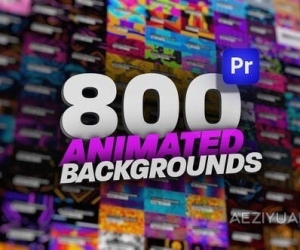马上注册,享用更多功能
您需要 登录 才可以下载或查看,没有账号?立即注册

×

本C4D视频教程是由AE资源素材社区整理出品的C4D中ARNOLD渲染引擎全面核心训练视频教程,Mographplus Comprehensive Introduction to ARNOLD for Cinema 4D,时长:8小时20分,大小:3 GB,MP4高清视频格式,附工程源文件,教程使用软件:CINEMA 4D,ARNOLD,共53个章节,语言:英语。
Cinema 4D是一套由德国公司Maxon Computer开发的3D绘图软件,以及高的运算速度和强大的渲染插件著称。Cinema 4D 应用广泛,在广告、电影、工业设计、等方面都有出色的表现,例如影片《阿凡达》有花鸦三维影动研究室中国工作人员使用Cinema 4D制作了部分场景,在这样的大片中看到C4D的表现是很优秀的。在其他动画电影中也人人素材网使用到C4D的有很多如《毁灭战士》(Doom)、《范海辛》〈Van Helsing〉、《蜘蛛侠》、以及动画片《极地特快》、《丛林总动员》(Open Season)等等。它正成为许多一流艺术家和电影公司的首选,Cinema 4D已经走向成熟,很多模块的功能在同类软件中是代表科技进步的成果。
Mographplus Comprehensive Introduction to ARNOLD for Cinema 4D
In this series of tutorials in 8 hours and 20 minutes ,that’s 500 minutes of tutorials , we learn how to use Arnold for cinema 4d .
First I show you where to find different Arnold tools and functions inside Cinema 4d, and walk you through the general workflow to get your job down with Arnold inside Cinema 4d
Sampling and ray depth are the most important principles that you should be familiar with when working with Arnold for Cinema 4d , that’s is why we discuss them thoroughly in more than 50 minutes and in 7 lessons , we make sure you comprehend the core principles before moving on to more general topics like lighting and shading .
The next section of the course is dedicated to lighting , we learn about different lights in Arnold and different lighting techniques , we learn about Area Lights . spot , distant and point lights , mesh and photometric lights .
We learn what are light filters and how to use them , what is physical sky and image based lighting , we learn about amazing volumetric effects in Arnold for cinema 4d , including Volume scattering and fog .
The lighting section of this course is about 1 hour a and 20 minutes in 12 lessons .
In the next section of the comprehensive introduction to Arnold For Cinema 4d , we start talking about shading and shader network , Arnold’s node-based shader network is one of the point that sets Arnold apart, it is so powerful that’s gonna blow your mind , its gonna change the way you think about shaders and developing them .
First we learn about standard shader which is the main shader in Arnold and capable of creating all sort of materials , we cover standard shader in the longest lesson of this course in about 40 minutes .
Then we discover bump and displacement mapping in Arnold . we explore skin shader and hair shader in a lot of details , these two shaders lets you realistically create subsurface scattering and hair shaders , the hair shader particularly is fantastic , and definitely one of the best hair shaders out there .
Then we learn about ray-switch , ambient occlusion , wire frame , utility , flat , lambert , two-sided and shadow matte shaders .
And then we take a closer look at the available nodes in Arnold shader network editor , we learn about layer color node , different color nodes , conversion , math and shading state nodes , we learn how to use user data and utility nodes and hopefully after watching these you should be very comfortable to develop complex shaders using these long list of nodes .
The shading section of this course is about 3 and a half hour in 16 lessons .
Then we see what Arnold has to offer when the time comes to cameras , we learn about different camera features and different camera types , we explore how to achieve effects like depth of field and motion blur .
In about 35 minutes and in 4 lessons we learn all about cameras .
In the section 6 of the course we learn how to render our scenes in Arnold for cinema 4d , we learn about Arnold drivers , we learn about AOVs . what are the AOVs that Arnold offers and how to export and composite them in a composting app like After Effects ,. Then we learn about custom AOVs and how to write them out using Arnold shader network editor . then we discover different render settings and also we learn about texture settings and tx manager in Arnold .
The rendering section of the course is about 75 minutes in 5 lessons .
In the final section of the course we take a closer look at Arnold parameters tag , we learn about Arnold procedural and how to render cinema 4d particles using Arnold , in the final lesson of the course we learn about Arnold volume , we learn how capable Arnold is in handling openVDB files and rendering them realistically , we show you all the steps you need to render openVDB files in Arnold .
The final section of the course is 40 minutes in 4 lessons .
This course is the best we have ever recorded at mographplus.com , this is quite different from what we have been doing at mographplus since we started , for each and every lesson there is a script and there is a plan ,, and this is how we are gonna be recording our courses from now on .
Also this is a live course , so whenever there is a major update from solid angle we are gonna be covering it in detail and add it to this course .
So there you have it , you asked for it , you got it , comprehensive introduction to Arnold For Cinema 4d

版权声明
1. 本站出于学习和研究的目的提供平台共会员进行交流和讨论,网站资源由会员从网上收集整理所得,版权属于原作者。
2. 网站所有资源是进行学习和研究测试之用,不得以任何方式用于商业用途。请在下载后24小时删除。
3. AE资源网非常重视知识产权,如有侵犯任何第三方权益,请发邮件(aeziyuan@foxmail.com)及时联系,邮件请附(专利证书、商标注册证、著作权证书,以及知识产权人授权投诉方进行投诉的证明文件等有效证明),我们将第一时间核实并删除侵权帖子(3个工作日内处理完并邮件答复)。
本文地址: https://aeziyuan.com/thread-16482-1-1.html
|
|
 100组专业视频调色LUTs预设包 Pro LUTs for15264 人气#LUT预设
100组专业视频调色LUTs预设包 Pro LUTs for15264 人气#LUT预设 快速闪烁头像切换照片墙汇聚LOGO标志动画展15412 人气#AE模板
快速闪烁头像切换照片墙汇聚LOGO标志动画展15412 人气#AE模板 32个相机取景器图标摄像机取景框叠加工具包15162 人气#AE模板
32个相机取景器图标摄像机取景框叠加工具包15162 人气#AE模板 800种可循环响应式设计色彩鲜艳的动画背景15254 人气#PR模板
800种可循环响应式设计色彩鲜艳的动画背景15254 人气#PR模板